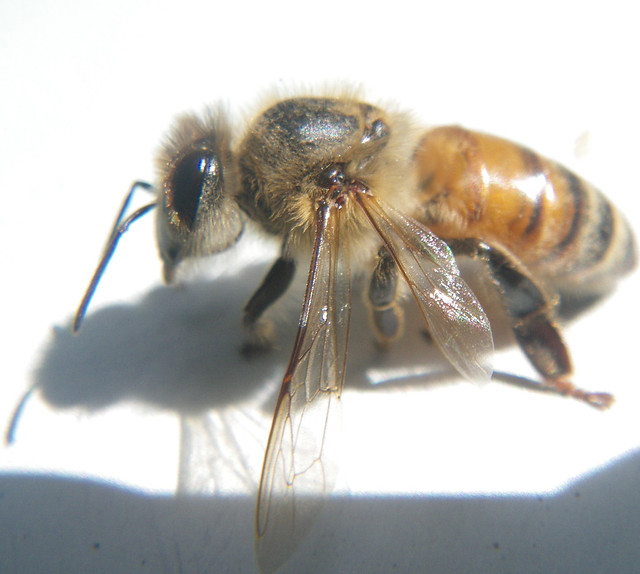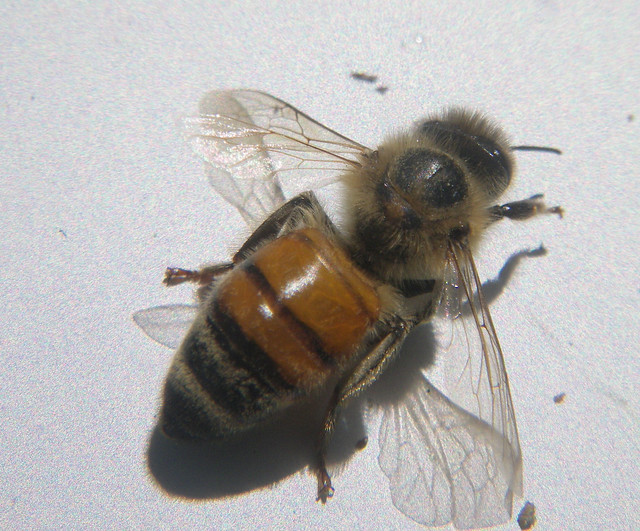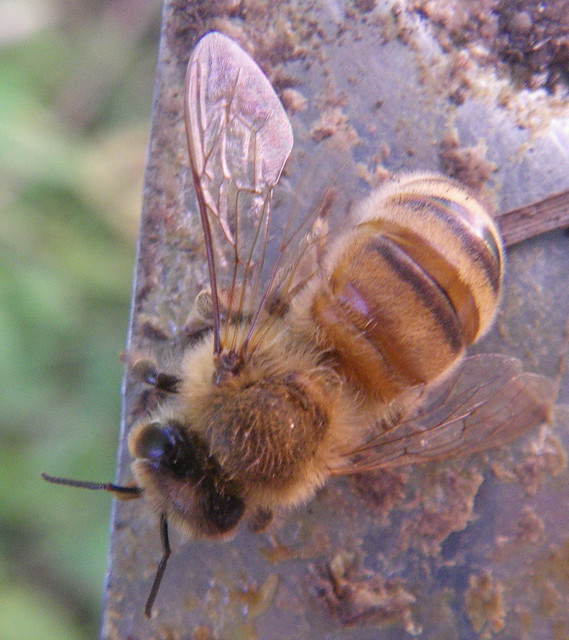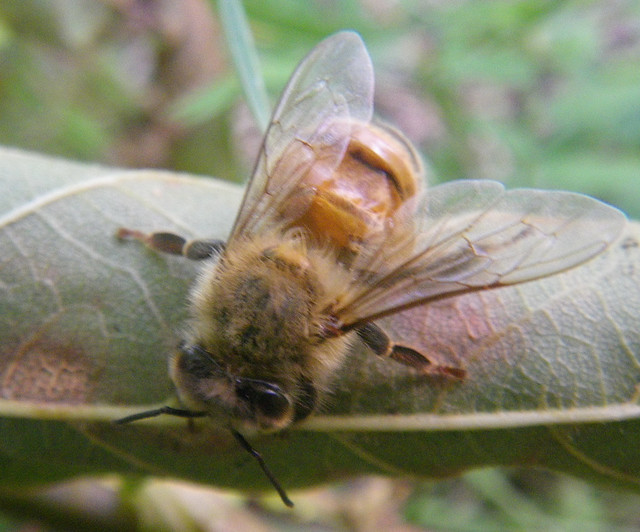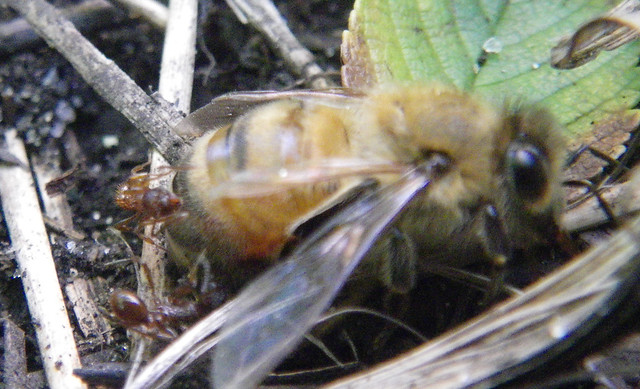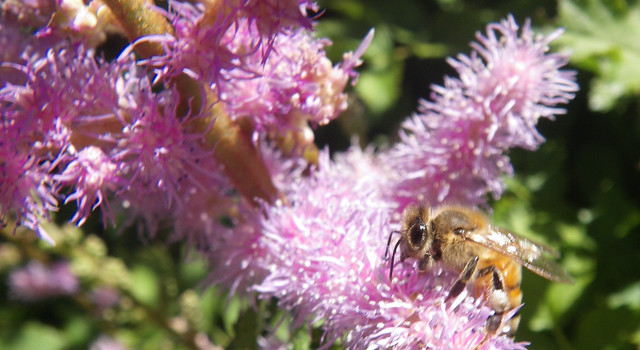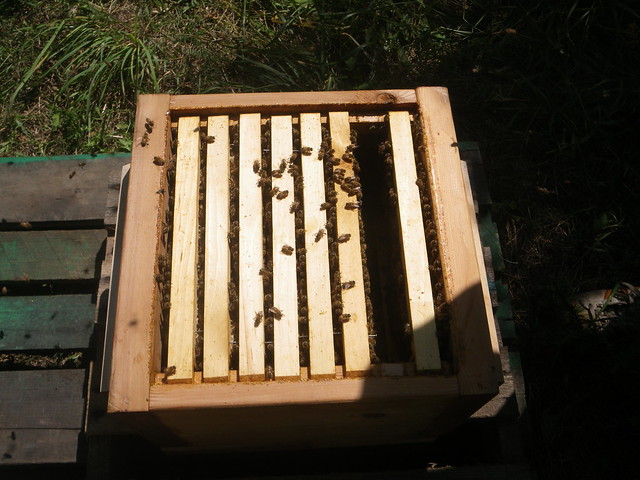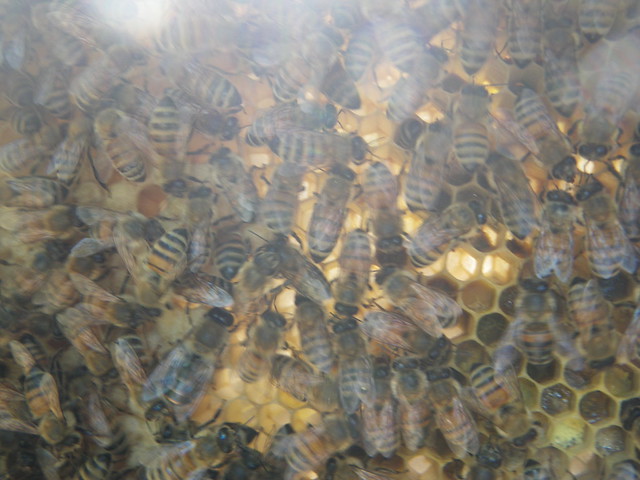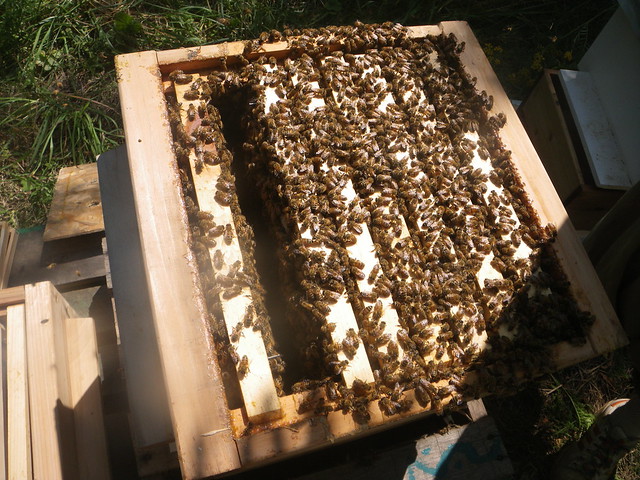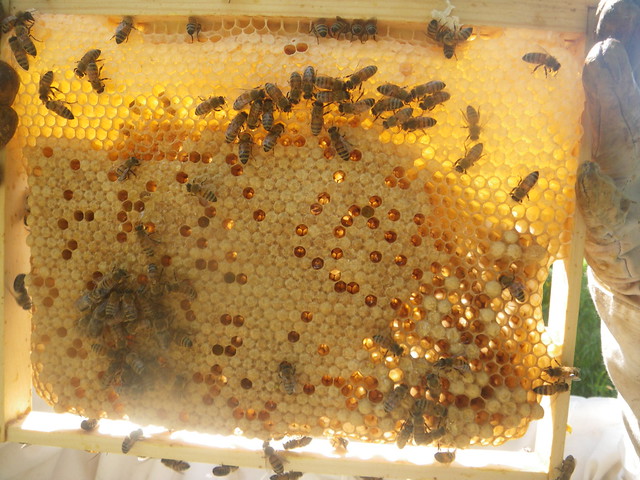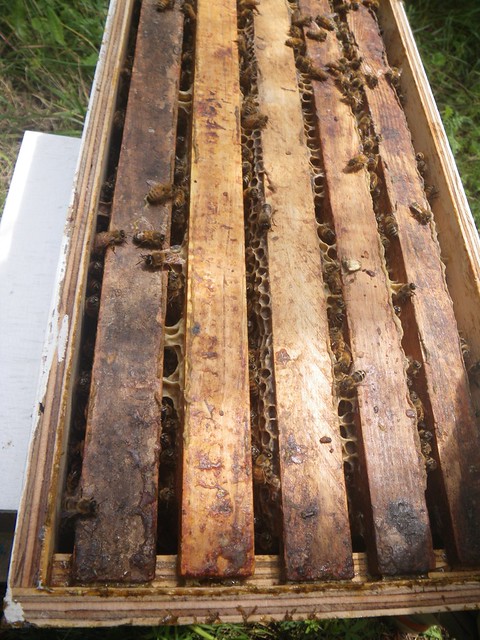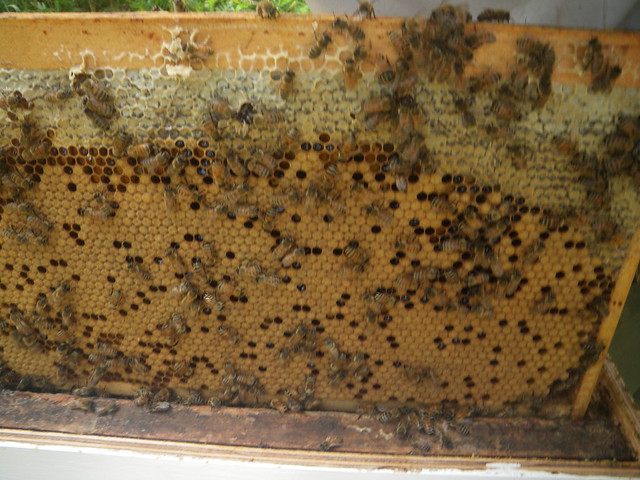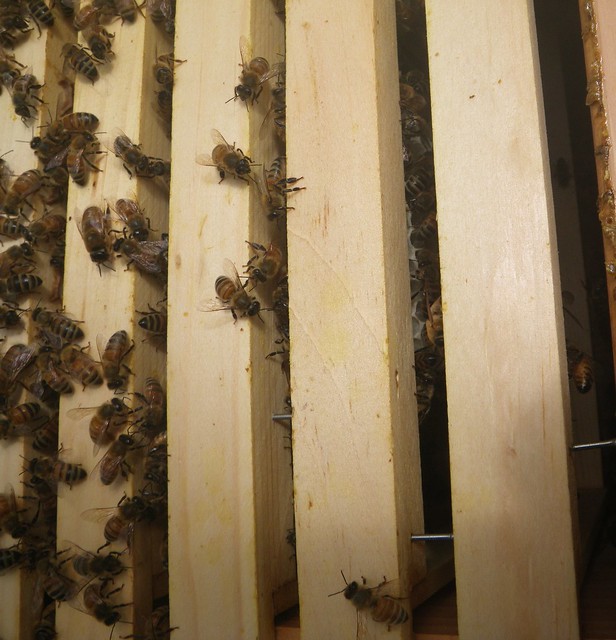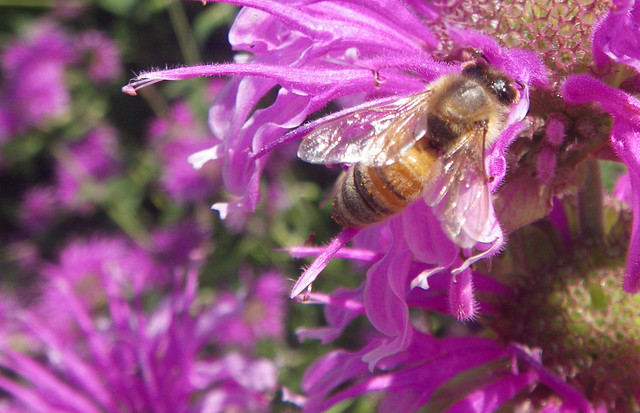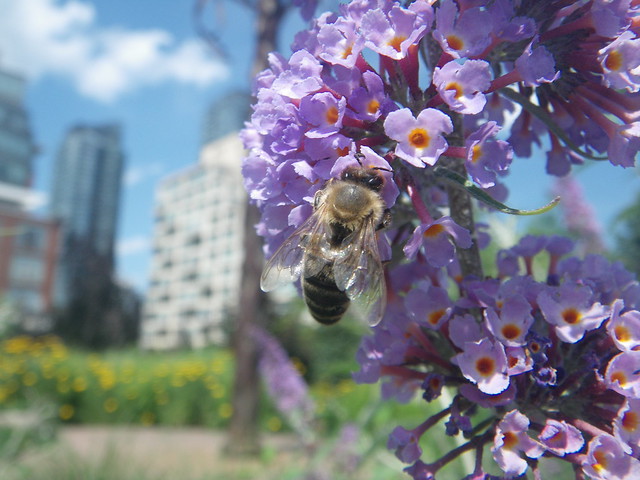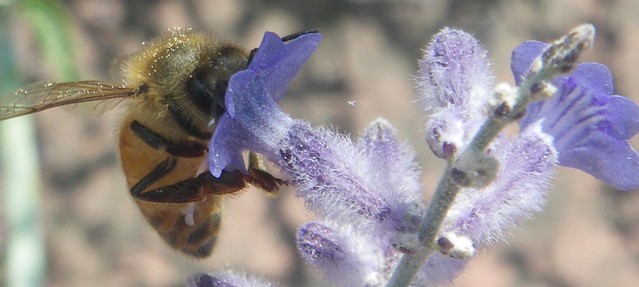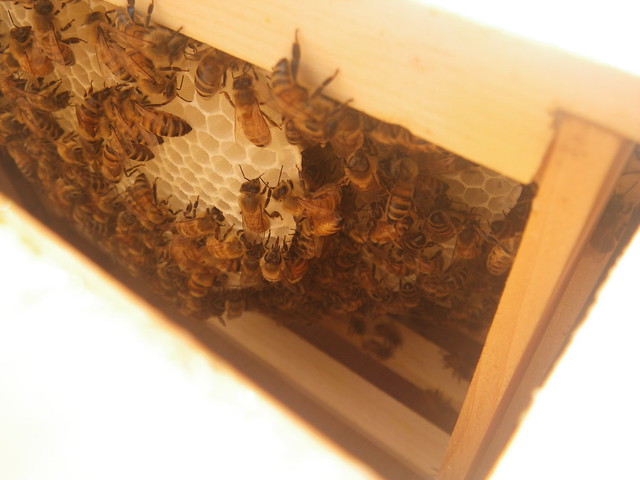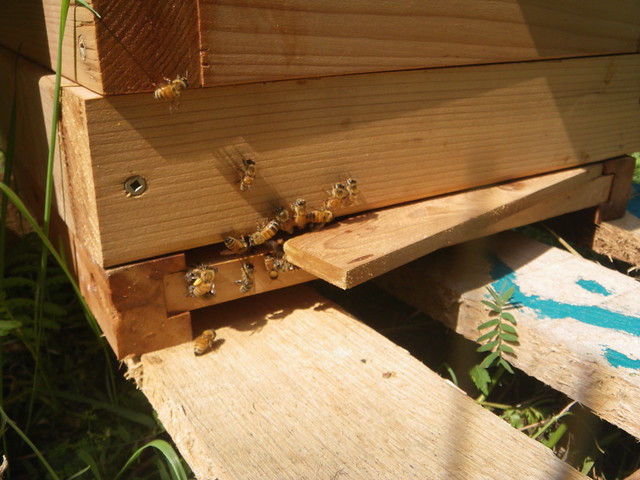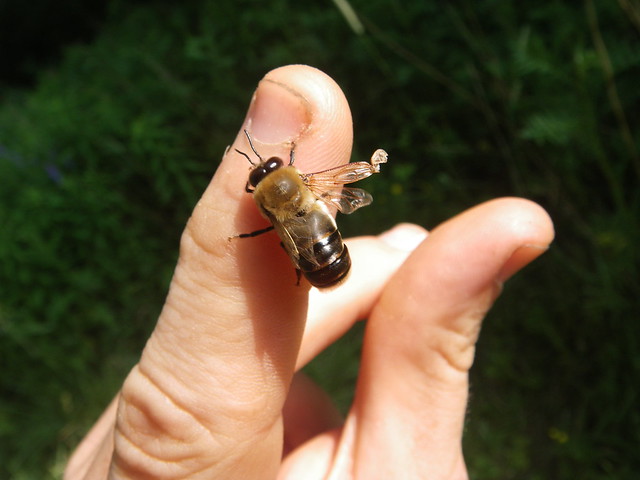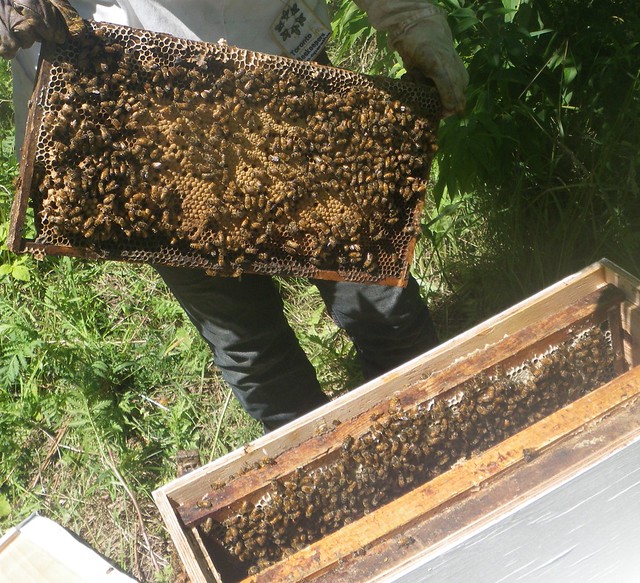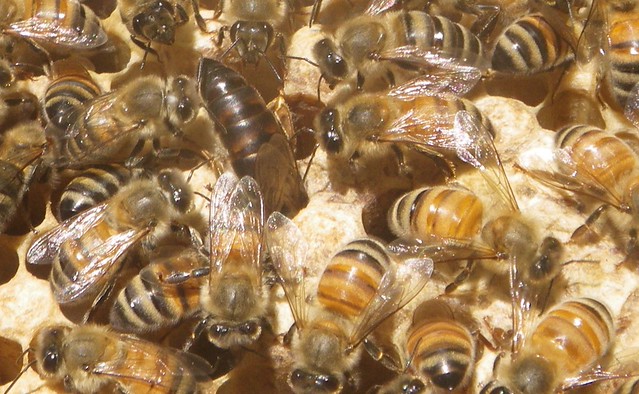A video overview of the hive entrance over the course of the fall:
September 1
Goldenrod and knotweed flowing.
They were making honey in the warré boxes but we saw they had returned to the nuc box for brood rearing. The nuc was still fairly heavy though.
One comb in the bottom box was not 100% drawn. We moved this comb and one other honey / nectar frame to a new box under the nuc. It was a tough call on wether to expand or not.
September 8
The knotweed is on its way out.
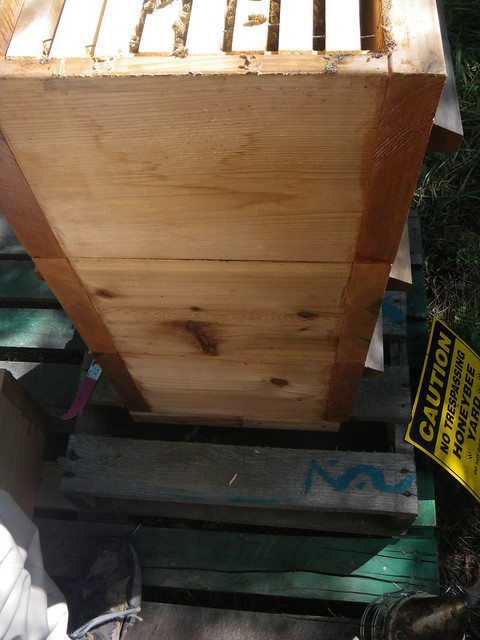 Photo by: Shawn Caza / CC: Attribution-NonCommercial-ShareAlike License
Photo by: Shawn Caza / CC: Attribution-NonCommercial-ShareAlike License
They had 5 good sized combs in the new box. 2 that had been just started that we moved in between the other combs.
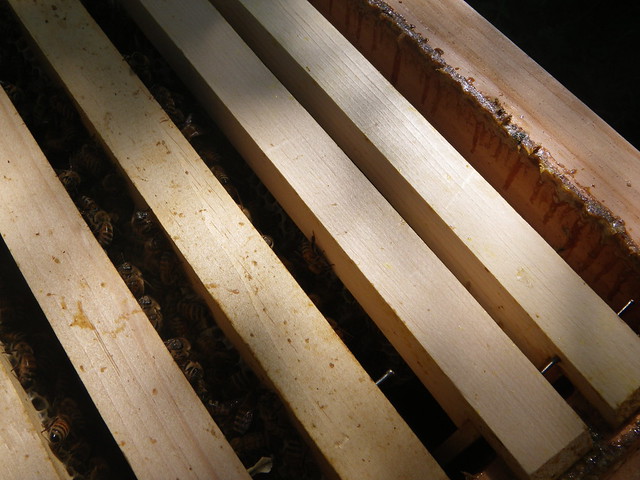 Photo by: Shawn Caza / CC: Attribution-NonCommercial-ShareAlike License
Photo by: Shawn Caza / CC: Attribution-NonCommercial-ShareAlike License
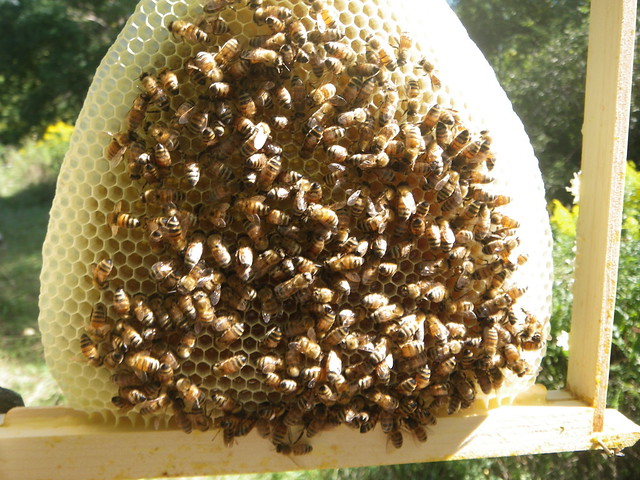 Photo by: Shawn Caza / CC: Attribution-NonCommercial-ShareAlike License
Photo by: Shawn Caza / CC: Attribution-NonCommercial-ShareAlike License
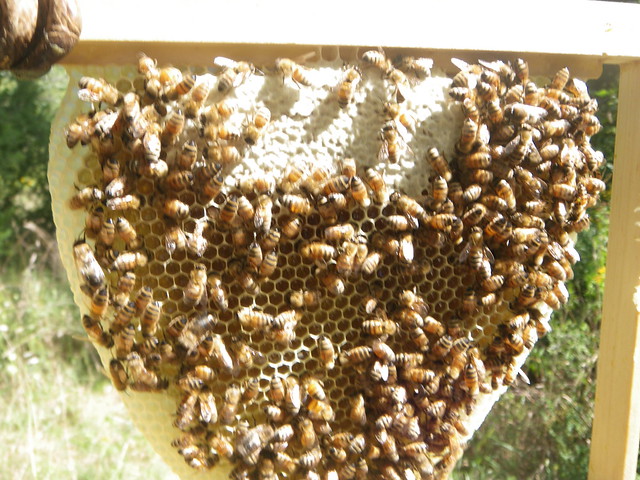 Photo by: Shawn Caza / CC: Attribution-NonCommercial-ShareAlike License
Photo by: Shawn Caza / CC: Attribution-NonCommercial-ShareAlike License
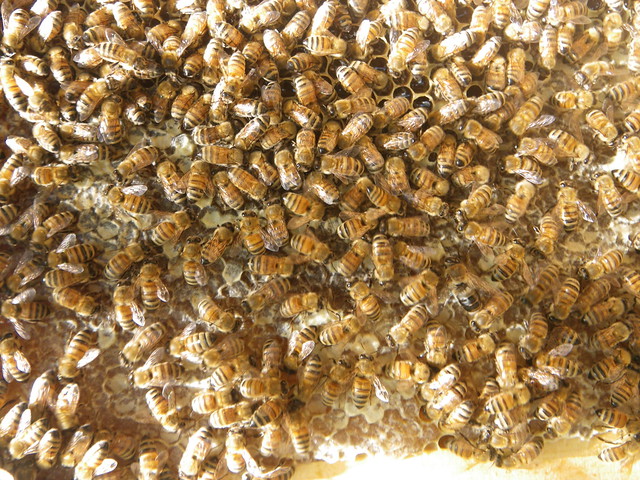 Photo by: Shawn Caza / CC: Attribution-NonCommercial-ShareAlike License
Photo by: Shawn Caza / CC: Attribution-NonCommercial-ShareAlike License
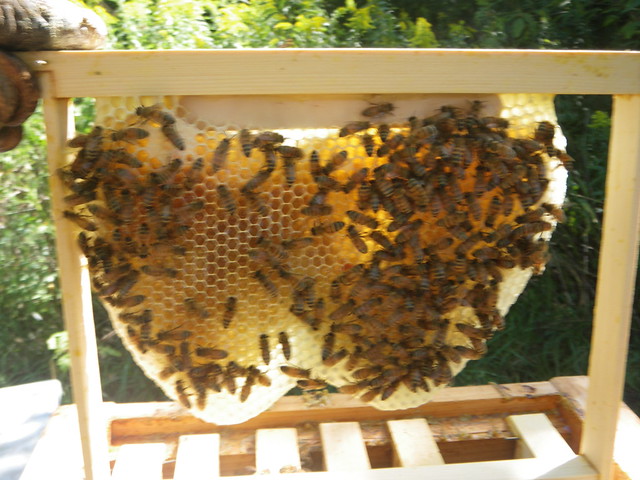 Photo by: Shawn Caza / CC: Attribution-NonCommercial-ShareAlike License
Photo by: Shawn Caza / CC: Attribution-NonCommercial-ShareAlike License
Still some brood in the nuc box.
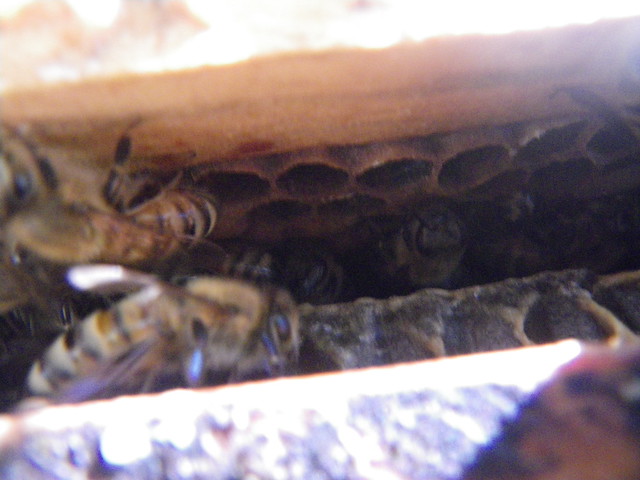 Photo by: Shawn Caza / CC: Attribution-NonCommercial-ShareAlike License
Photo by: Shawn Caza / CC: Attribution-NonCommercial-ShareAlike License
September 18
We flipped the entrance to the larger opening (In anticipation for winter, so there's less chance wintering bees dying winter bees will block the entrance.)
Bottom box - Some amount of capped brood, loads of pollen
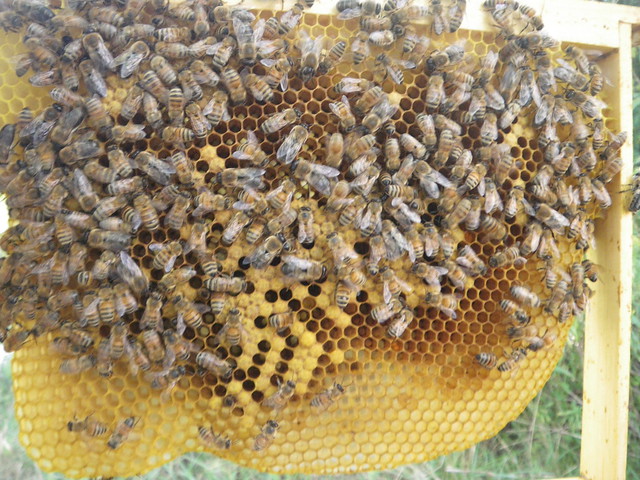 Photo by: Shawn Caza / CC: Attribution-NonCommercial-ShareAlike License
Photo by: Shawn Caza / CC: Attribution-NonCommercial-ShareAlike License
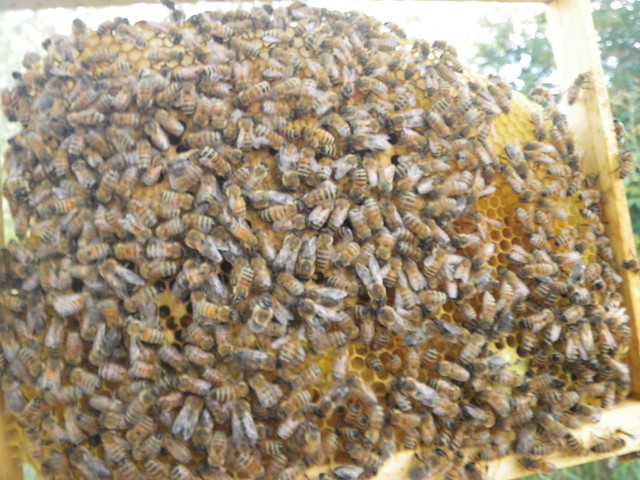 Photo by: Shawn Caza / CC: Attribution-NonCommercial-ShareAlike License
Photo by: Shawn Caza / CC: Attribution-NonCommercial-ShareAlike License
2nd box
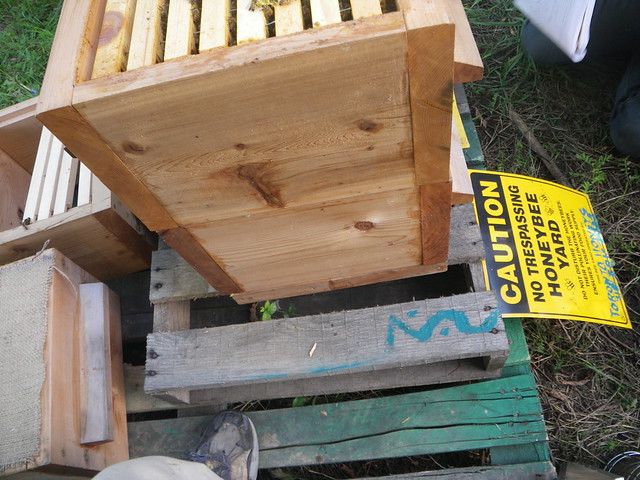 Photo by: Shawn Caza / CC: Attribution-NonCommercial-ShareAlike License
Photo by: Shawn Caza / CC: Attribution-NonCommercial-ShareAlike License
 Photo by: Shawn Caza / CC: Attribution-NonCommercial-ShareAlike License
Photo by: Shawn Caza / CC: Attribution-NonCommercial-ShareAlike License
Only looked at two frames. Saw honey on the top edges and eggs. We saw the queen here.
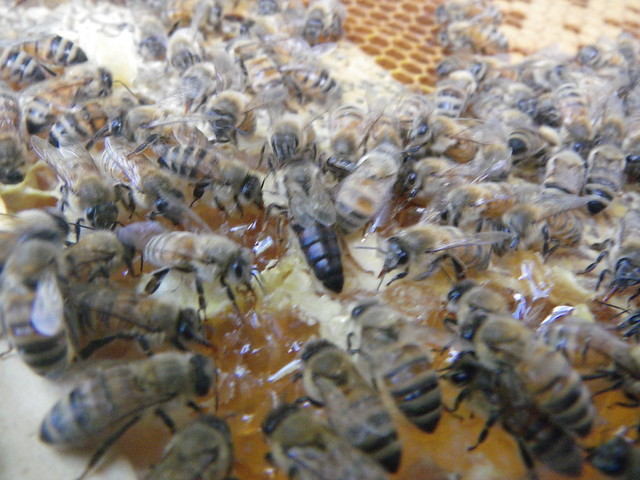 Photo by: Shawn Caza / CC: Attribution-NonCommercial-ShareAlike License
Photo by: Shawn Caza / CC: Attribution-NonCommercial-ShareAlike License
We watched here for a while as she appeared to have a deformity on one side of her upper abdomen.
It seems we spooked her as she flew away. We were very happy to see her return a minute latter to the hive.
3rd box - still small comb on the edge.
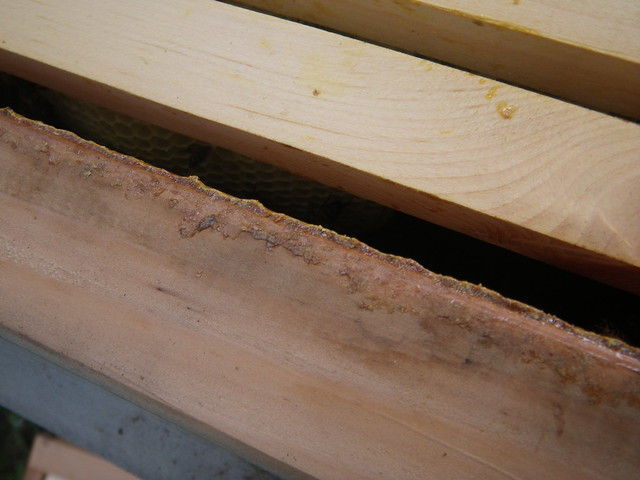 Photo by: Shawn Caza / CC: Attribution-NonCommercial-ShareAlike License
Photo by: Shawn Caza / CC: Attribution-NonCommercial-ShareAlike License
Tops of the centre combs had honey.
 Photo by: Shawn Caza / CC: Attribution-NonCommercial-ShareAlike License
Photo by: Shawn Caza / CC: Attribution-NonCommercial-ShareAlike License
Some brood on 6 frames, mostly capped. Two had eggs.
Compared to the sun hive, it seems much less populous, maybe 1/3 of the bees. The top two boxes feel heavy. Maybe heavier than the sun hive.
A good variety of flowers blooming in nearby gardens:
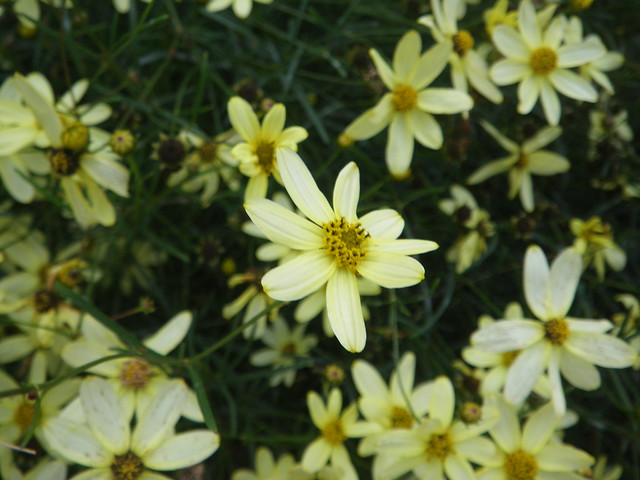 Photo by: Shawn Caza / CC: Attribution-NonCommercial-ShareAlike License
Photo by: Shawn Caza / CC: Attribution-NonCommercial-ShareAlike License
 Photo by: Shawn Caza / CC: Attribution-NonCommercial-ShareAlike License
Photo by: Shawn Caza / CC: Attribution-NonCommercial-ShareAlike License
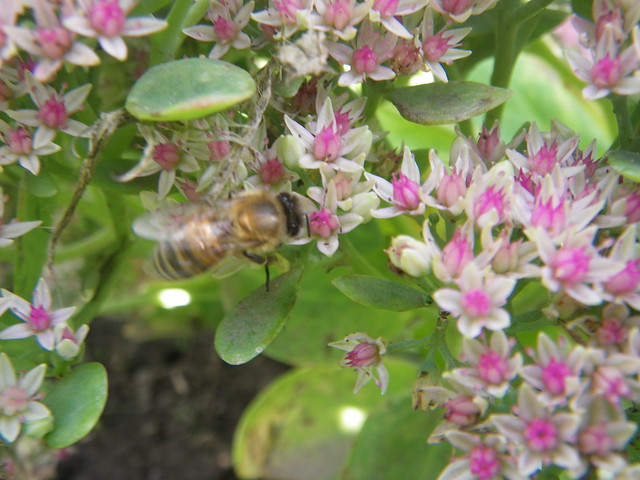 Photo by: Shawn Caza / CC: Attribution-NonCommercial-ShareAlike License
Photo by: Shawn Caza / CC: Attribution-NonCommercial-ShareAlike License
 Photo by: Shawn Caza / CC: Attribution-NonCommercial-ShareAlike License
Photo by: Shawn Caza / CC: Attribution-NonCommercial-ShareAlike License
 Photo by: Shawn Caza / CC: Attribution-NonCommercial-ShareAlike License
Photo by: Shawn Caza / CC: Attribution-NonCommercial-ShareAlike License
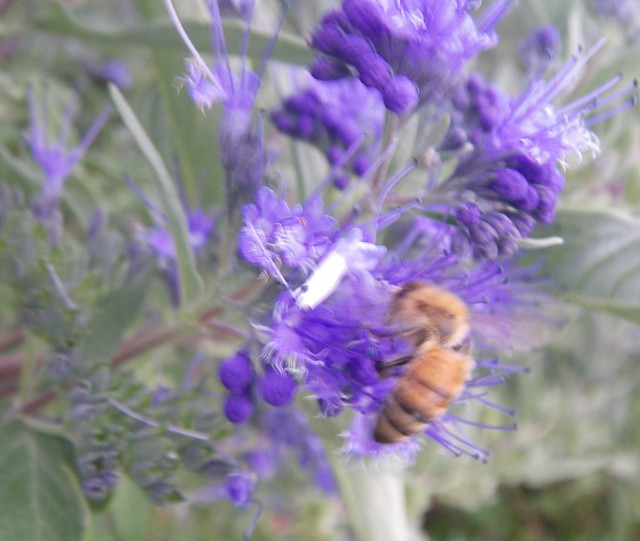 Photo by: Shawn Caza / CC: Attribution-NonCommercial-ShareAlike License
Photo by: Shawn Caza / CC: Attribution-NonCommercial-ShareAlike License
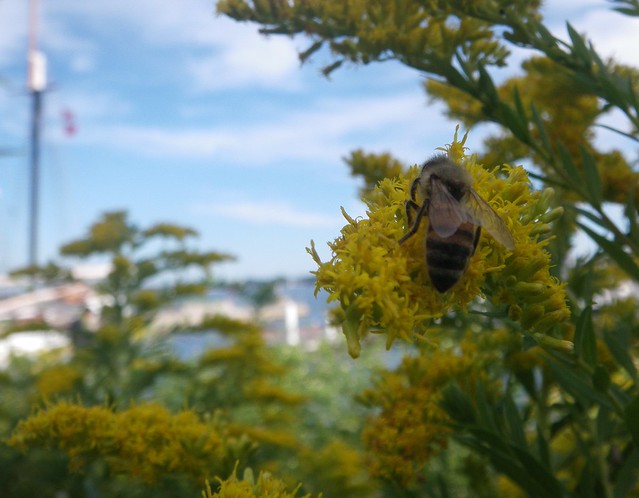 Photo by: Shawn Caza / CC: Attribution-NonCommercial-ShareAlike License
Photo by: Shawn Caza / CC: Attribution-NonCommercial-ShareAlike License
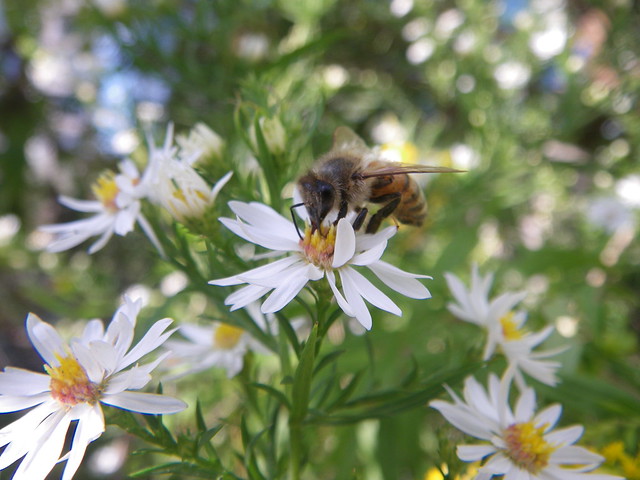 Photo by: Shawn Caza / CC: Attribution-NonCommercial-ShareAlike License
Photo by: Shawn Caza / CC: Attribution-NonCommercial-ShareAlike License
October 12
This hive is very heavy. More honey than any of the others. With cool weather on the way we reduced the entrance very tight.
October 23
The high was around 6 and things were extremly quiet at the entrance. I only occasionaly saw a guard bee. A few dead / dying bees around the entrance. One was removed from the hive while I watched.
 Photo by: Shawn Caza / CC: Attribution-NonCommercial-ShareAlike License
Photo by: Shawn Caza / CC: Attribution-NonCommercial-ShareAlike License
Very occasionaly a wasp waltzed into the hive and would exit about a minute later.


